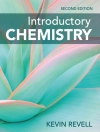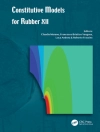Green chemistry and chemical engineering belong together and this twelth volume in the successful Handbook of Green Chemistry series represents the perfect one-stop reference on the topic.
Written by an international team of specialists with each section edited by international leading experts, this book provides first-hand insights into the field, covering chemical engineering process design, innovations in unit operations and manufacturing, biorefining and much more besides.
An indispensable source for every chemical engineer in industry and academia.
Table des matières
About the Editors XIII
List of Contributors XV
Preface XIX
1 Chemical Engineering Science and Green Chemistry – The Challenge of Sustainability 1
Alexei A. Lapkin
1.1 Sustainability Challenge for the Chemical Industry 1
1.2 From Green to Sustainable Chemistry 5
1.3 Chemical Engineering Science for Sustainability 7
1.4 Trends in Chemical Engineering Science 9
1.5 Topics Covered in This Book 11
Acknowledgment 13
References 13
Part One: Molecular Engineering of Materials, Reactions, and Processes 17
2 Recent Advances in the Molecular Engineering of Solvents for Reactions 19
Eirini Siougkrou, Amparo Galindo, and Claire S. Adjiman
2.1 Introduction 19
2.2 Solvent Effects on Reactions 22
2.3 Design or Selection of Solvents for Chemical Reactions 26
2.3.1 Model-Based Screening Methods 27
2.3.2 Generate-and-Test Methods 28
2.3.3 Optimization-Based Methods 30
2.3.4 Discussion 34
2.4 A Case Study 35
2.5 Conclusions 38
Acknowledgments 38
References 39
3 Hierarchically Structured Pt and Non-Pt-Based Electrocatalysts for PEM Fuel Cells 47
Panagiotis Trogadas and Marc-Olivier Coppens
3.1 Introduction 47
3.2 Pure Hollow Pt Nanoparticles 49
3.3 Hollow Pt Metal Alloys 51
3.3.1 Pt Au 52
3.3.2 Pt Ag 53
3.3.3 Pt Co 56
3.3.4 Pt Ni 58
3.3.5 Pt Ru 59
3.3.6 Pt Pd 61
3.3.7 Pt Cu 62
3.4 Non-Pt Alloy Nanostructures 63
3.5 Conclusions and Outlook 64
Acknowledgment 65
References 65
4 New Frontiers in Biocatalysis 73
John M. Woodley and Nicholas J. Turner
4.1 Introduction 73
4.2 Recent Advances in Biocatalysis 74
4.3 Biocatalytic Retrosynthesis 75
4.4 Process-Driven Protein Engineering 80
4.5 Process Developments 83
4.5.1 Continuous Processes 83
4.5.2 Kinetic Analysis 84
4.6 Future Perspectives 84
References 85
Part Two: Innovations in Design, Unit Operations, and Manufacturing 87
5 Conceptual Process Design and Process Optimization 89
Alexander Mitsos, Ung Lee, Sebastian Recker, and Mirko Skiborowski
5.1 Introduction 89
5.2 Mathematical Background 89
5.2.1 System of Nonlinear Equations 90
5.2.2 Nonlinear Programming (NLP) 90
5.2.3 Mixed Integer Programming 92
5.3 Synthesis 93
5.3.1 Reactor Networks 93
5.3.2 Separation Systems 95
5.3.3 Overall Flowsheets 97
5.4 Superstructure-Based Techniques 101
5.4.1 Heat Exchange Networks 101
5.4.2 Process Flowsheet Optimization 103
5.5 Integrated Process Design, Operation, and Control 105
5.6 Water and Energy Processes 105
5.7 Conclusions and Outlook 107
References 107
6 Development of Novel Multiphase Microreactors: Recent Developments and Future Challenges 115
Evgeny Rebrov
6.1 Principles and Features 115
6.1.1 Continuous Phase Multiphase Microreactors 115
6.1.1.1 Falling Film Microreactor 115
6.1.1.2 Mesh Contactor 116
6.1.2 Dispersed Phase Multiphase Microreactors 116
6.1.2.1 Segmented Flow Microreactors 116
6.1.2.2 Microstructured Packed Beds 117
6.1.2.3 Prestructured Microreactors 118
6.1.2.4 Foam Microreactors 120
6.1.2.5 Microreactors with Fibrous Internal Structures 120
6.2 Experimental Practice 121
6.2.1 Flow Regimes 121
6.2.1.1 Capillary Microreactors 121
6.2.1.2 Structured Packed Beds 122
6.2.2 Dispersion and Holdup in Microstructured Packed Bed Reactors 123
6.2.2.1 Liquid Holdup 123
6.2.2.2 Hydrodynamic Dispersion 124
6.3 Modeling Features 125
6.3.1 Hydrodynamics 125
6.3.1.1 Falling Films Microreactors 125
6.3.2 Pressure Drop in Capillary Microreactors 127
6.3.2.1 Gas–Liquid Microreactors 127
6.3.2.2 Liquid–Liquid Microreactors 130
6.3.3 Mass Transfer 131
6.3.3.1 Capillary Microreactors 131
6.3.3.2 Falling Film Microreactors 133
6.3.4 Two-Phase Flow Distribution 133
6.4 Applications 136
6.4.1 Falling Film Microreactors 136
6.4.2 Capillary Microreactors 137
6.4.2.1 Wall Coated Catalytic Microreactors 137
6.4.2.2 Phase Transfer Catalysis in Microreactors 139
6.4.2.3 Microstructured Packed Bed Reactors 142
6.5 Conclusions and Outlook 144
References 144
7 Process Intensification through Continuous Manufacturing: Implications for Unit Operation and Process Design 153
Sebastian Falß, Nicolai Kloye, Manuel Holtkamp, Angelina Prokofyeva, Thomas Bieringer, and Norbert Kockmann
7.1 Continuous Processes as a Means of Process Intensification 153
7.2 Equipment for Continuous Processes 158
7.2.1 Upstream Equipment 159
7.2.1.1 Reactors without Active Mixing 159
7.2.1.2 Reactors with Dynamic Mixing 161
7.2.2 Downstream Equipment 163
7.2.3 Process Integration 165
7.2.4 Continuous Equipment as Enabling Technology 166
7.3 Process Development and Implementation for Continuous Processes 168
7.3.1 Process Development and Scale-Up 168
7.3.2 Flexible Implementation of Continuous Processes 172
7.4 Selected Case Studies 174
7.5 Conclusion and Outlook 180
References 182
8 How Technical Innovation in Manufacturing Is Fostered through Business Innovation 191
Nicolas Eghbali, Marianne Hoppenbrouwers, Steven Lemain, Gert De Bruyn, and Bart Vander Velpen
8.1 General Introduction 191
8.2 Concept of Chemical Leasing and Take Back Chemicals 192
8.2.1 The Concept of Take Back Chemicals 194
8.2.2 Advantages and Challenges of the Take Back Chemicals Model 195
8.2.2.1 What Are the Advantages of Implementing Ta Ba Chem 196
8.2.2.2 What Are the Impediments in Implementing the New Business Models? 197
8.3 General Economic, Technical, and Management Aspects 198
8.3.1 Economic Aspects 198
8.3.1.1 Direct Gains, Indirect Gains, and Investments 198
8.3.1.2 Pricing 199
8.3.1.3 Conclusion on the Economic Aspects 200
8.3.2 Technical Aspects 201
8.3.2.1 Reuse of Chemicals 201
8.3.2.2 Process Optimization 201
8.3.2.3 Conclusion on the Technical Aspects 201
8.3.3 Organizational/Managerial Aspects 202
8.3.3.1 Sales 202
8.3.3.2 Quality Assurance 202
8.3.3.3 Tendering and Rewarding 202
8.3.3.4 Knowledge Sharing 202
8.3.3.5 Logistics 203
8.3.3.6 Conclusion on the Organizational/Managerial Aspects 203
8.4 Compatibility of the Service Model with the Actual Legislation: Some Important Aspects 203
8.4.1 Transition from Sales to Providing a Service to the Customer 204
8.4.1.1 The Supplier Retains Ownership of the Chemical 204
8.4.1.2 Result-Oriented Services Lead to Different Pricing of a Chemical 204
8.4.1.3 A Transparent and Elaborated Contract Is Necessary 205
8.4.2 Closing the Life Cycle and Preventing Waste 205
8.4.3 Business Confidentiality and the Protection of Competition 208
8.4.3.1 Intellectual Property Rights 208
8.4.3.2 Competition 208
8.5 General Conclusion 211
References 211
9 Applications of 3D Printing in Synthetic Process and Analytical Chemistry 215
Victor Sans, Vincenza Dragone, and Leroy Cronin
9.1 Introduction 215
9.1.1 Polymerization-Based Additive Manufacturing (AM) 216
9.1.1.1 Stereolithography (SLA) 217
9.1.1.2 Photopolymer Jetting (PJ) 217
9.1.1.3 Physical Binding 217
9.1.2 Melting-Based Techniques 218
9.1.2.1 Selective Laser Melting (SLM) 218
9.1.2.2 Electron Beam Melting (EBM) 218
9.1.2.3 Fused Deposition Modeling (FDM) 219
9.1.2.4 Laser Sintering (LS) 219
9.1.2.5 Material Jetting (MJ) 219
9.2 Chemical Reactors Manufacturing by Additive Manufacturing Techniques 220
9.2.1 3D Printing Technologies in Chemistry 220
9.3 3D Printing Applied to Flow Chemistry 226
9.3.1 Mesoscale Reactors 226
9.3.2 3D Printed Membranes 235
9.4 Applications of 3D Printed Flow Devices in Analytical Chemistry 239
9.4.1 3D Printing of Valves, Pumps and Actuators 239
9.4.2 Modular Devices Based on SL 242
9.5 Future Trends 248
9.5.1 Ultrafast Printing 249
9.5.2 Smart Materials through 4D Printing 250
9.6 Conclusions 251
References 252
Part Three: Enabling Technologies 257
10 Process Analytical Chemistry and Nondestructive Analytical Methods: The Green Chemistry Approach for Reaction Monitoring, Control, and Analysis 259
Miriam Fontalvo Gómez, Boris Johnson Restrepo, Torsten Stelzer, and Rodolfo J. Romañach
10.1 Green Chemistry and Chemical Analysis in Manufacturing 259
10.2 Process Analytical Chemistry: Concept and Objectives 260
10.3 Vibrational Spectroscopy 264
10.4 Challenges to Overcome 268
10.5 Applications of Process Analytical Chemistry and Nondestructive Analyses 270
10.5.1 Dairy Industry 270
10.5.2 Synthesis of Active Pharmaceutical Ingredients 271
10.5.3 Preparation of Polymeric Strip Film Unit Dosage Forms 273
10.5.4 Polymer Industry 274
10.5.5 Process Analytical Chemistry for Biodiesel Production 276
10.6 Future Trends in PAC 279
Acknowledgments 281
References 281
11 NMR Spectroscopy and Microscopy in Reaction Engineering and Catalysis 289
Carmine D’Agostino, Mick D. Mantle, and Andrew J. Sederman
11.1 Introduction 289
11.2 Basic Principles of NMR 290
11.2.1 Nuclear Spins and Bulk Magnetization 290
11.2.2 NMR Spectroscopy of Liquids 293
11.2.3 NMR Relaxation 295
11.2.3.1 Spin–Lattice Relaxation 295
11.2.3.2 Spin–Spin Relaxation 296
11.2.4 Pulsed Field Gradient NMR 297
11.3 The NMR Toolkit in Reaction Engineering and Catalysis 299
11.3.1 NMR Spectroscopy in Catalysis and Reaction Engineering 300
11.3.2 Diffusion of Fluids Confined in Porous Catalysts 306
11.3.2.1 Catalyst Deactivation Studies Using PFG NMR 311
11.3.3 NMR Relaxation Time Analysis in Porous Catalytic Materials 314
11.3.4 Combining NMR Spectroscopy with Magnetic Resonance Imaging 319
11.4 Summary 324
References 324
12 An Introduction to Closed-Loop Process Optimization and Online Analysis 329
Christopher S. Horbaczewskyj, Charlotte E. Willans, Alexei A. Lapkin, and Richard A. Bourne
12.1 Introduction 329
12.2 Principles of Self-Optimization and Requirements for Experimental Systems 330
12.3 Analytical Techniques for Closed-Loop Optimization 332
12.4 Decision Algorithms in Closed-Loop Optimization 334
12.4.1 Algorithms for Discovery 335
12.4.2 Algorithms for Developing Process Understanding 337
12.4.3 Algorithms for Automated Process Optimization 338
12.5 Application Examples of Closed-Loop Discovery and Optimization 341
12.5.1 Discovery in Closed-Loop Self-Optimization 341
12.5.2 High-Throughput Screening 342
12.5.3 Examples of One-Variable-at-a-Time Reaction Optimization 344
12.5.4 Examples of Application of Design of Experiments 346
12.5.5 Rate-Based/Physical Organic Approaches 350
12.5.6 Examples of Algorithm-Based Self-Optimization 364
12.6 Conclusions and Future Directions 368
Acknowledgments 369
References 369
Index 375
A propos de l’auteur
Paul T. Anastas joined Yale University as Professor and serves as the Director of the Center for Green Chemistry and Green Engineering at Yale. From 2004-2006, Paul Anastas has been the Director of the Green Chemistry Institute in Washington, D.C. Until June of 2004 he served as Assistant Director for Environment at e White House Office of Science and Technology Policy where his responsibilities included a wide range of environmental science issues including furthering international public-private cooperation in areas of Science for Sustainability such as Green Chemistry. In 1991, he established the industry-government-university partnership Green Chemistry Program, which was expanded to include basic research, and the Presidential Green Chemistry Challenge Awards. He has published and edited several books in the field of Green Chemistry and one of the inventors of the 12 principles of Green Chemistry.
Alexei Lapkin is Professor of Sustainable Reaction Engineering at the Univeristy of Cambridge. He received his Ph D in Chemical Engineering at the University of Bath in 2000 and held a Lecturer position until 2009. He then moved to University of Warwick, School of Engineering, to help to develop their research programme in Chemical Engineering. In 2013 he took over his position in Cambridge.












